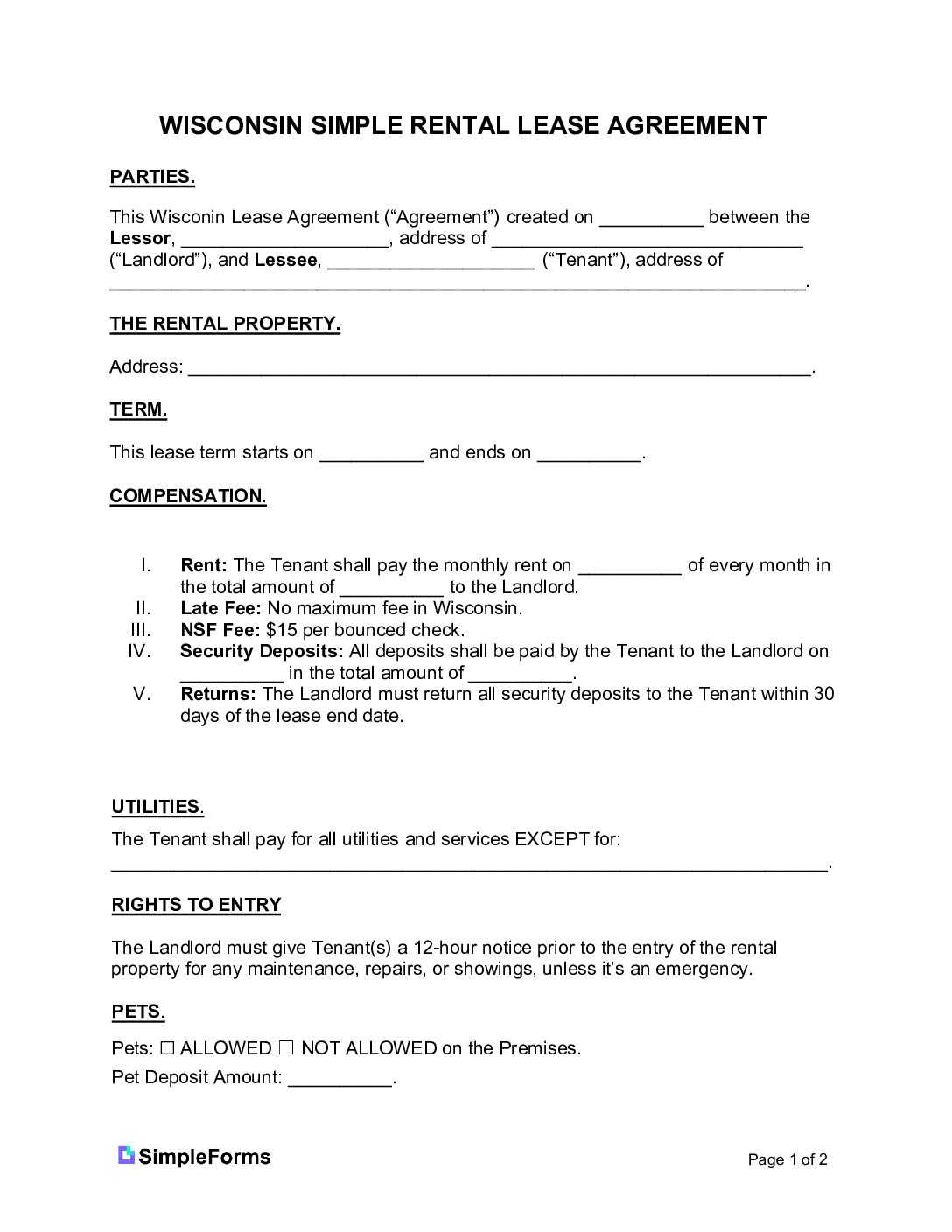An Wisconsin lease agreement is used when renting rental property and it is a contract between the Landlord and Tenants in exchange for monthly rent payments.
Most Recent US Home Facts
- Population (2023): 334,914,895
- Median Households (2022): 125,736,353
- Median Household Income (2022): $75,149
- Owner-occupied Households (2022): 64.8%
Source: U.S. Census Bureau
What to Include in the Form?
Required Disclosures (5)
Lead-Based Paint Disclosure
Building Code Violations Disclosure
Damage and Defects Disclosure
Landlord/Owner Identification
Utility Disclosure
Security Deposits
Maximum – There’s no laws governing maximum security deposit amounts in Wisconsin.
Returns – Landlords must return all deposits to the Tenant within 30 days of the lease end date.
Source: § 134.06(2)
Landlord Access
General Access – Landlords shall give Tenants a minimum of 12-hours notice before entering the rental property.
Source: § 134.09(2)(a)
Paying Rent
Grace Period – No grace period.
Late Fees – No state law governing late fees. Late fees for late rent should be agreed to in the lease agreement.
NSF Fee – $15 per bounced check.
Source: § 134.09(8)
How to Fill Out a Wisconsin Lease Agreement Form?
- STEP 1 – The date on which both parties agree to the agreement.
- STEP 2 – Landlord’s Name – If the landlord is a company, enter the company name.
- STEP 3 – Landlord’s Address – The landlord’s street name and number.
- STEP 4 – The landlord’s City, State, and Zip Code.
- STEP 5 – The tenant’s full legal name that matches a government-issued ID.
- STEP 6 – The tenant’s street name and number.
- STEP 7 – The tenant’s current City, State, and Zip Code.

